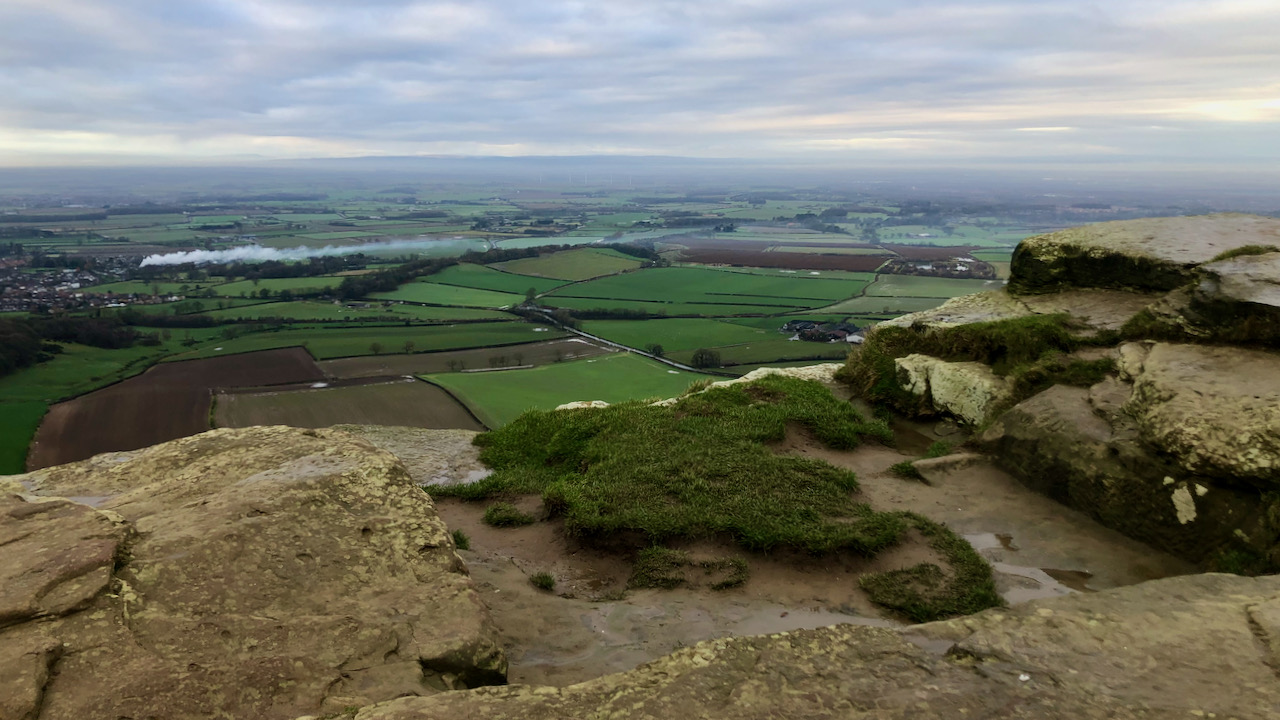I took this photograph of the large square-cut recess in the sandstone cap atop Roseberry summit. Clearly crafted by human hands, in my imagination, I’ve had it down as the likely spot for the hermitage and smith’s forge mentioned in a 17th-century letter1Letter to Sir Thomas Chaloner (1559 – 1615) by ‘H. TR,’ ‘The Topographer and Genealogist Volume II’, edited by John Gough Nichols, F.S.A. 1853.. However, I might be wildly off the mark, considering the extensive quarrying of the sandstone capping and the impact of at least two rockfalls.
Yet, my gaze also fixated on the ribbon of smoke billowing from the allotments in Great Ayton. Smoke typically ascends as long as it’s warmer than the surrounding air, but this particular plume was clinging to the ground, wafted toward Middlesbrough by a breeze—curiously, on the summit, the air was nearly still.
It seems that the air near the ground is cooler and denser compared with the air above. As the warm smoke rises and encounters the cooler, denser lower air, it is trapped and blocked from dissipating vertically. It’s a temperature inversion, a phenomenon more typically observed when a layer of cloud is trapped near the ground by warmer air.
- 1Letter to Sir Thomas Chaloner (1559 – 1615) by ‘H. TR,’ ‘The Topographer and Genealogist Volume II’, edited by John Gough Nichols, F.S.A. 1853.

Leave a Reply